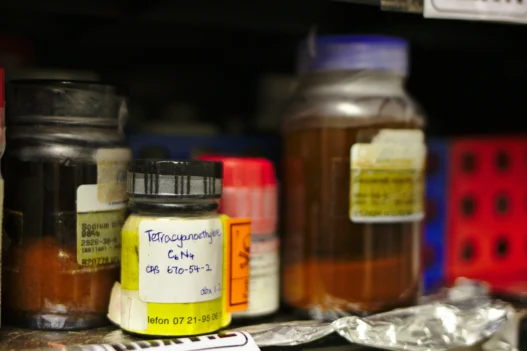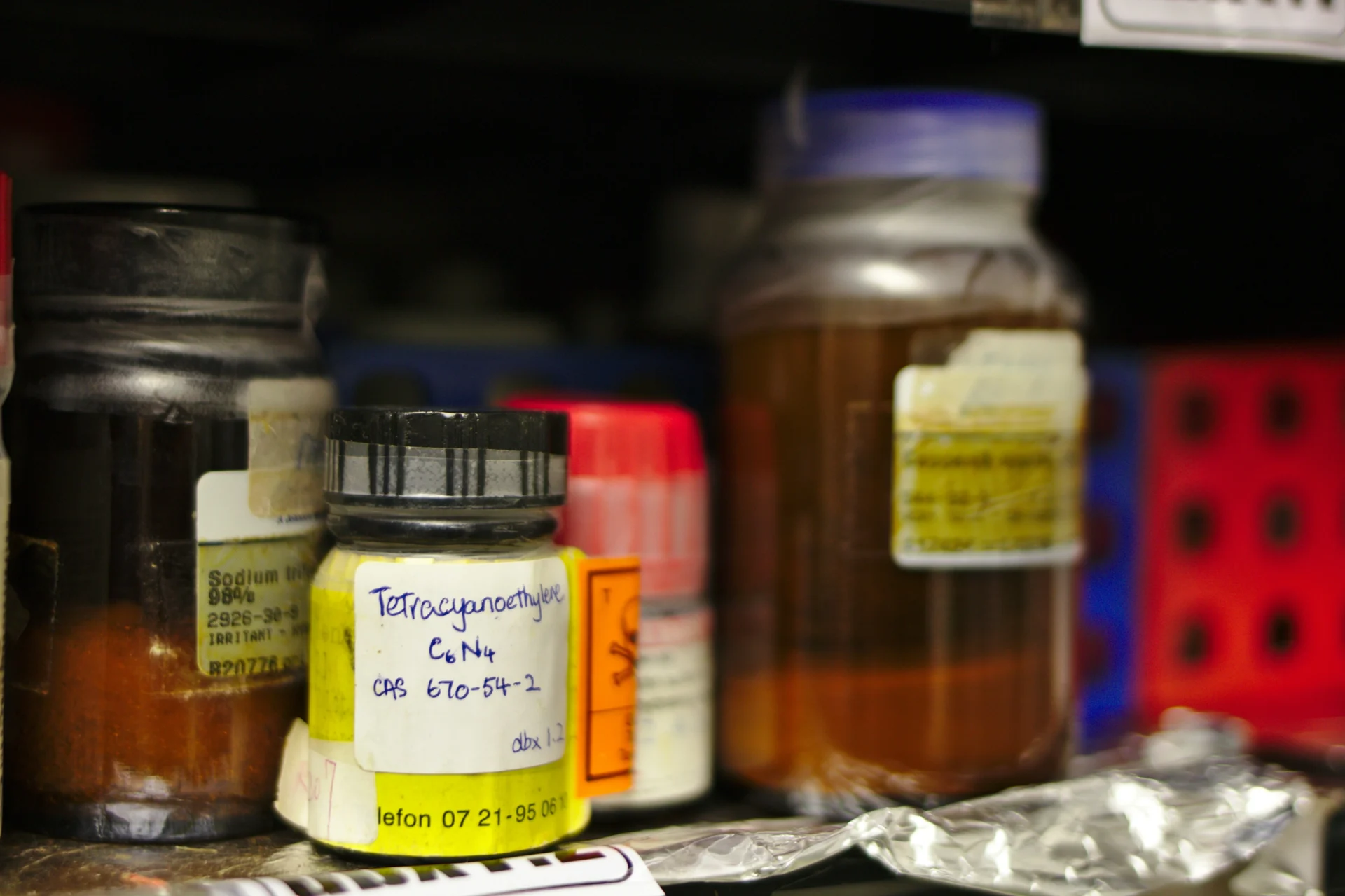Chlormequat is a plant growth regulator commonly used in agriculture to inhibit the growth of crops such as wheat, barley, and tobacco. By controlling plant growth, Chlormequat helps increase crop yield, improve quality, and enhance resistance to environmental stresses. This chemical plays a crucial role in ensuring food security and sustainability by promoting efficient cultivation practices and maximizing agricultural output.
Table of Contents:
- 💡 Commercial Applications
- ⚗️ Chemical & Physical Properties
- 🏭 Production & Procurement
- ⚠️ Safety Considerations
- 🔬 Potential Research Directions
- 🧪 Related Compounds
💡 Commercial Applications
Chlormequat is a plant growth regulator that has various commercial and industrial applications. It is commonly used in agriculture to reduce lodging in cereal crops such as wheat and barley, thereby improving crop yield and quality. Chlormequat can also be applied to fruit trees to control the growth of shoots and improve fruit size and quality.
In addition to its agricultural applications, Chlormequat is also used in industrial settings to regulate plant growth in ornamental plants and flowers. It is often applied to potted plants and cut flowers to slow down their growth and extend their shelf life. Chlormequat can help maintain the aesthetic appeal of plants and flowers during transportation and display.
Chlormequat is not commonly used as a drug or medication for human consumption. However, in veterinary medicine, it may be used to control the growth of certain parasites. Chlormequat is considered safe for animals when used in appropriate doses and under the guidance of a veterinarian. In general, the use of Chlormequat as a medication is limited compared to its widespread commercial and industrial applications in agriculture and horticulture.
⚗️ Chemical & Physical Properties
Chlormequat, also known as 2-chloroethyltrimethylammonium chloride, is a white crystalline solid with no distinct odor. Its appearance is similar to table salt, though it lacks the characteristic salty smell.
With a molar mass of approximately 114.6 g/mol and a density of about 1.15 g/cm³, chlormequat is comparable to common food items like sugar in terms of molar mass and density. However, it is denser than many food items such as fruits and vegetables.
Chlormequat has a melting point of around 238-244°C and a boiling point of approximately 270°C. These values are significantly higher than those of most common food items, which generally have lower melting and boiling points.
Chlormequat is highly soluble in water and has a low viscosity. Compared to common food items, chlormequat is more soluble in water than substances like flour or sugar, and its viscosity is lower than that of oils or honey.
🏭 Production & Procurement
Chlormequat, a plant growth regulator, is primarily produced through chemical synthesis in specialized manufacturing facilities. The process involves the reaction of chloroacetic acid with dimethylamine to yield the final product, chlormequat chloride.
Chlormequat can be procured from authorized suppliers and distributors who cater to agricultural markets. The compound is typically available in various forms such as liquid concentrates or solid powders. It can be transported in bulk quantities via tank trucks or in smaller containers for ease of handling and application on agricultural crops.
Transportation of chlormequat is subject to stringent regulations and safety measures due to its chemical properties. Proper labeling, packaging, and documentation are essential for compliance with national and international shipping standards. Additionally, specialized carriers with expertise in handling hazardous chemicals may be utilized for the safe transport of chlormequat to end users.
⚠️ Safety Considerations
Safety considerations for Chlormequat include its potential for eye and skin irritation, as well as its ability to cause respiratory tract irritation. It is important to handle this chemical in a well-ventilated area and to wear appropriate personal protective equipment, such as gloves and goggles, to avoid any contact with the skin or eyes. Additionally, proper storage and handling procedures should be followed to prevent accidental exposure.
Chlormequat has several hazard statements associated with it, including “Causes skin irritation,” “Causes serious eye irritation,” and “May cause respiratory irritation.” These statements indicate the potential dangers of exposure to this chemical and emphasize the importance of taking proper precautions when working with it. It is essential to follow safety guidelines and procedures to minimize the risk of harm.
Precautionary statements for Chlormequat include “Wear protective gloves/protective clothing/eye protection/face protection” and “Use only outdoors or in a well-ventilated area.” These statements highlight the necessary safety measures that should be taken when handling this chemical to protect against potential hazards. It is crucial to adhere to these precautions to ensure the safety of individuals working with Chlormequat.
🔬 Potential Research Directions
One potential research direction of Chlormequat is its effects on different plant species, as previous studies have shown varying responses to the growth regulator. Researchers may investigate the molecular mechanisms underlying these differences and explore ways to optimize its use in agriculture.
Another avenue of research could focus on the environmental impact of Chlormequat, including its persistence in soil and potential leaching into groundwater. Studies could evaluate the long-term effects on soil health and microbial communities, as well as assess the risks of contamination to surrounding ecosystems.
Furthermore, there is a need for research into the potential synergistic effects of Chlormequat when used in combination with other agrochemicals. Researchers could investigate its compatibility with different pesticides and fertilizers, as well as explore potential benefits or drawbacks of integrated pest management strategies that incorporate Chlormequat.
🧪 Related Compounds
One similar compound to Chlormequat based upon molecular structure is Ethephon. Ethephon is a plant growth regulator that works similarly to Chlormequat by inhibiting the production of gibberellins, which are plant hormones responsible for stem elongation. Ethephon is widely used in agriculture to control growth in various crops, such as cotton, tobacco, and cereals.
Another compound structurally similar to Chlormequat is Daminozide. Daminozide, also known as Alar, is a plant growth regulator that helps to control plant growth by inhibiting the production of gibberellins. Like Chlormequat, Daminozide is commonly used in horticulture to regulate growth in ornamental plants and fruit trees. However, Daminozide has been banned in many countries due to health concerns.
A third compound with a similar molecular structure to Chlormequat is Mepiquat chloride. Mepiquat chloride is a plant growth regulator that acts by inhibiting gibberellin production, similar to Chlormequat. It is used primarily in cotton cultivation to control excessive vegetative growth and promote fruit development. Mepiquat chloride has been shown to increase yield and improve the quality of cotton fibers.








